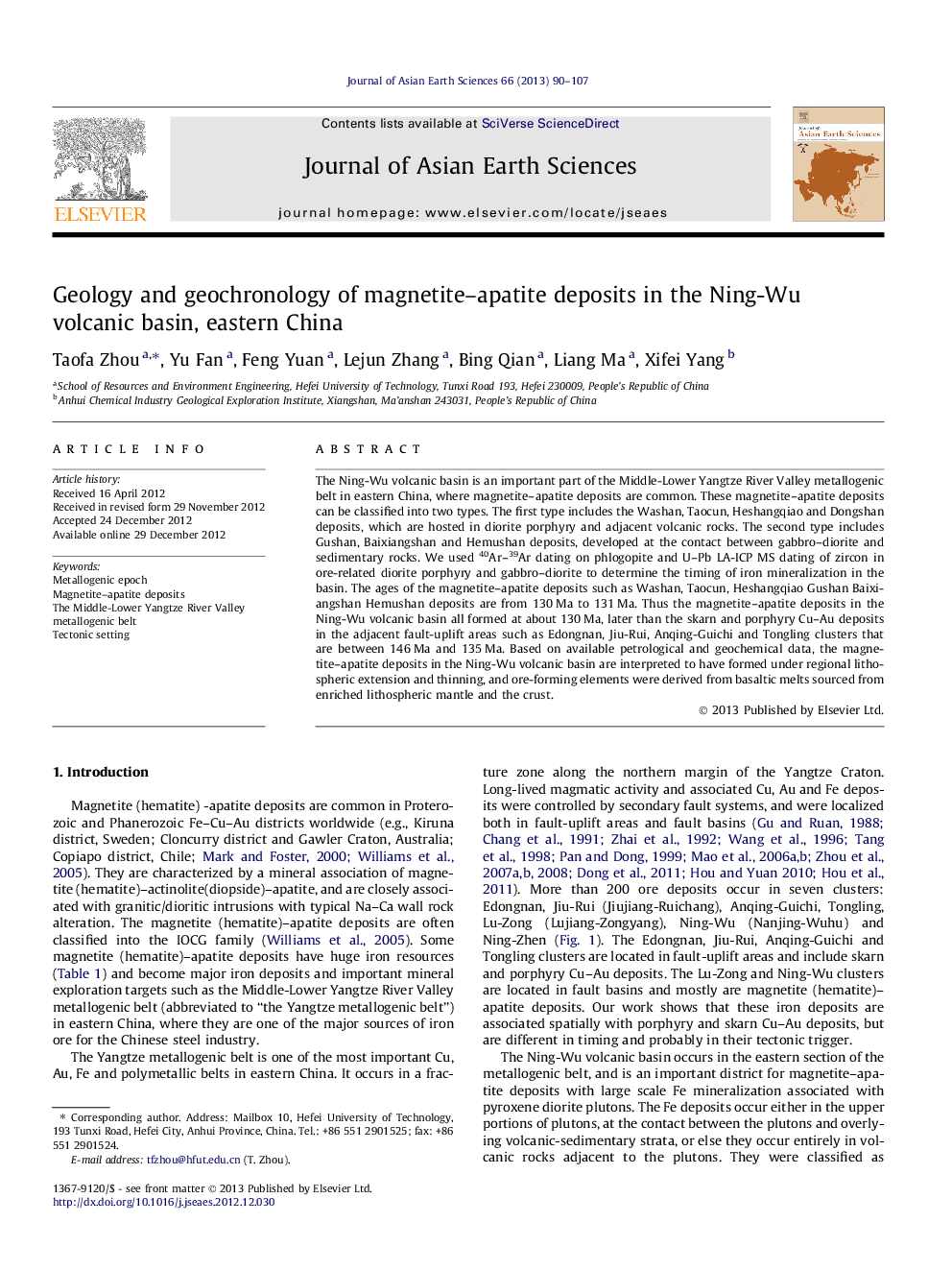| کد مقاله | کد نشریه | سال انتشار | مقاله انگلیسی | نسخه تمام متن |
|---|---|---|---|---|
| 4731168 | 1640399 | 2013 | 18 صفحه PDF | دانلود رایگان |
The Ning-Wu volcanic basin is an important part of the Middle-Lower Yangtze River Valley metallogenic belt in eastern China, where magnetite–apatite deposits are common. These magnetite–apatite deposits can be classified into two types. The first type includes the Washan, Taocun, Heshangqiao and Dongshan deposits, which are hosted in diorite porphyry and adjacent volcanic rocks. The second type includes Gushan, Baixiangshan and Hemushan deposits, developed at the contact between gabbro–diorite and sedimentary rocks. We used 40Ar–39Ar dating on phlogopite and U–Pb LA-ICP MS dating of zircon in ore-related diorite porphyry and gabbro–diorite to determine the timing of iron mineralization in the basin. The ages of the magnetite–apatite deposits such as Washan, Taocun, Heshangqiao Gushan Baixiangshan Hemushan deposits are from 130 Ma to 131 Ma. Thus the magnetite–apatite deposits in the Ning-Wu volcanic basin all formed at about 130 Ma, later than the skarn and porphyry Cu–Au deposits in the adjacent fault-uplift areas such as Edongnan, Jiu-Rui, Anqing-Guichi and Tongling clusters that are between 146 Ma and 135 Ma. Based on available petrological and geochemical data, the magnetite–apatite deposits in the Ning-Wu volcanic basin are interpreted to have formed under regional lithospheric extension and thinning, and ore-forming elements were derived from basaltic melts sourced from enriched lithospheric mantle and the crust.
► The magnetite–apatite deposits related magmatism contains diorite porphyry related and gabbro–diorite.
► The Magnetite–apatite deposits were concentrated at about 130 Ma.
► The Magnetite–apatite deposits were formed under lithospheric extension and crust thinning.
Journal: Journal of Asian Earth Sciences - Volume 66, 8 April 2013, Pages 90–107
